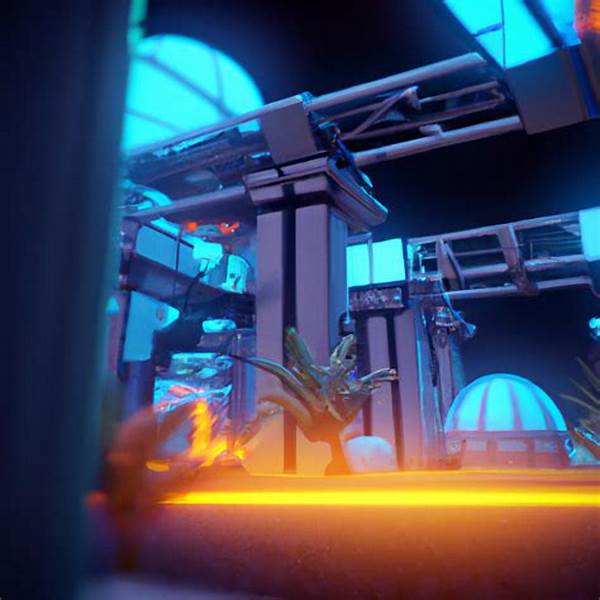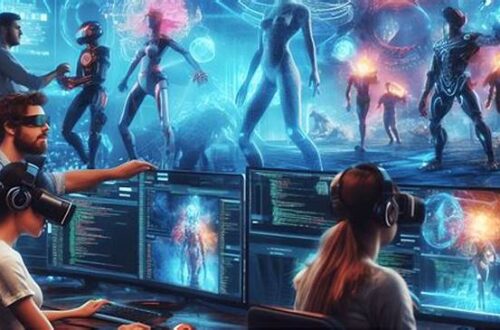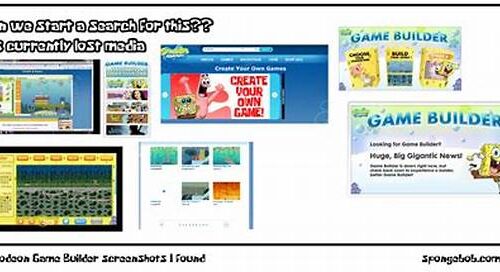Hey there, fellow gamers and aspiring developers! Today, we’re diving into something super exciting and equally nerdy: implementing physics in game development. Now, before you start picturing chalkboards filled with confusing equations, let me make it clear—this is way more fun. It’s about making games feel real, adding that wow factor to every jump, collision, and explosion. So if you’ve ever wondered how video games manage to mimic real-world physics so closely, or even how you can start making your game’s physics something to rave about, keep reading!
Read Now : Ad Revenue Options For Game Builder Games
The Basics of Physics in Games
At its core, implementing physics in game development is about replicating the rules of the physical world within a virtual environment. You know how you get a little thrill when you fling a character off a cliff and they actually fall and roll realistically? Yep, that’s physics working its magic! Developers use physics engines like Unity or Unreal to simulate gravity, momentum, and other forces. These engines are like pre-packaged math wizards that handle all the nitty-gritty calculations. But don’t be fooled—it still takes a good understanding of basic physics principles to get everything looking and feeling just right. It’s not only about making games appear realistic; it’s about creating a consistent and believable universe for players to lose themselves in.
Implementing physics in game development doesn’t just stop at falling objects or realistic water ripples. It extends far beyond, into character animations, vehicle dynamics, and destructible environments. By using skeletal animation and ragdoll physics, characters can react in unique ways to different scenarios—ever notice how a character can crumple realistically when knocked out? And let’s not forget about driving games! Real-time physics determine how vehicles handle terrain, making sure everything from a sleek sports car to a hefty truck behaves just like you’d expect. The same goes for destructible environments, where the virtual world becomes your playground to smash, crash, and obliterate with immersive real-world consequences. It’s the magic of a complex system working seamlessly in the background to enhance your experience.
Tools and Technologies
When it comes to implementing physics in game development, the tools of the trade are crucial. One big contender in the field is Unity’s Physics 2D engine—a go-to for budding developers. It helps you manipulate game objects effortlessly with forces and collisions. And don’t forget Unreal Engine, which reigns supreme with its Chaos Physics for hyper-realistic destruction and dynamics. Dive in with these tools and watch as they transform your game world.
Next up, we can’t talk about implementing physics in game development without mentioning Havok. This industry-standard physics engine has been around the block, empowering games to simulate real-world dynamics with near-perfect precision. Its prowess in collision detection and dynamic simulations makes it a popular choice for developers across the globe. And hey, if you’re aiming for hyper-realistic gameplay, Havok might just become your best buddy.
Implementing physics in game development isn’t just limited to engines. Middleware such as NVIDIA PhysX also plays a pivotal role in gameplay realism. This powerhouse tech accelerates physics computations using GPU, meaning more capacity for detailed simulations. Imagine a game with intricate, dynamic environments where every object interacts just as in real life. No wonder it’s favored by many AAA game developers!
Got a knack for scripting? Implementing physics in game development using custom scripts opens a thousand doors. Languages like C# and C++ can be harnessed to create your own physics rules and scenarios. Whether you’re creating anti-gravity worlds or exaggerated force interactions, a bit of code can go a long way in crafting unique gameplay experiences. So don’t skimp on learning procedural programming—it’s your magic wand.
Utilizing tools and technology effectively can make implementing physics in game development a breeze. Familiarize yourself with joint constraints, collision layers, and physics materials to control how your game objects interact. Add that juicy bounce to a basketball or give a character a running start before they leap. It’s these intricate details that add up to the spectacular, mind-blowing moments we all crave as gamers.
Realistic Game Dynamics
So, implementing physics in game development isn’t just about crunching numbers; it’s about storytelling too. Every game tells a story, some through epic quests while others weave narratives with simple interactions. With physics, you can create tension, comedy, or even surprise. Imagine a character trying to sneak across a creaky wooden floor, each tiny groan of the boards potentially giving them away. That kind of anticipation, brought to life with physics, turns simple moments into captivating gameplay.
Imagine, too, the comedic chaos physics can bring to a game. A simple misstep leads to a glorious chain reaction—tripping over a rock might send a character tumbling into a barrel, which then rolls downhill to knock over a fruit stand. Implementing physics in game development allows you to create these delightful accidents, making a virtual world that feels spontaneous and alive. It’s about balancing the quest for realism with the joy of unpredictability, keeping players on their toes as they navigate through your meticulously crafted universe.
Challenges and Considerations
When implementing physics in game development, be ready for the hurdles that follow. Real-time calculations can stretch your hardware’s capabilities. You gotta optimize! Keep an eye out for bugs like tunneling—a pesky issue where fast-moving objects phase through walls. It can be a headache, but a few tweaks in collision settings can fix it.
Implementing physics in game development also requires a sharp eye for detail. Ensure that your virtual physics don’t just look accurate but feel right to players. Sometimes, exaggerated effects offer better immersion. You know how characters in animated films leap with an exaggerated arc? Replicating this in games can create more compelling narratives.
Read Now : Parallel Processing Techniques In Physics
Playtesting is crucial when implementing physics in game development. Watch how real players engage with your world. Do they laugh at the unexpected, or does a mishap halt their enjoyment? Feedback can guide you in perfecting the balance between realism and fun. Yes, it’s a process, but utterly rewarding!
Implementing physics in game development means considering accessibility. Not all players enjoy jarring realistic effects. Games that allow toggling or scaling physics settings can appeal to wider audiences. The key is flexibility, giving players control over their environment for an inclusive gaming experience.
Testing and Implementing
So, you’ve got the basic laws of physics integrated into your game—awesome! But does it feel right when you play it? Testing and refining play a vital role when implementing physics in game development. We can’t stress enough how critical playtesting is. It’s where you notice those tiny hiccups, like an out-of-place explosion or a strangely floating object. Get real players to bang around in your game world. Believe me, they’ll find quirks you never anticipated and feed invaluable insights back to you. After all, the endgame is to keep tweaking until your game feels just right.
Ever experienced losing countless hours polishing your game through testing? Welcome to the unpredictable journey of implementing physics in game development. You may discover scenes that play out differently than expected, or animations that go unexpectedly viral for their hilarity. Repeated testing and tweaking ensure the smoothest and most enjoyable gameplay experience. Remember, it’s all part of giving your game that professional polish.
Implementing Physics for Enhanced Player Engagement
One cornerstone of a fantastic gaming experience is player engagement, and implementing physics in game development is a game-changer here. Forget about lifeless pixels; dynamic physics makes your game universe seem alive. Imagine players entering a vast, open world where each interaction matters—from carefully balancing on narrow ledges to witnessing leaves dance in the breeze. These tactile differences forge deeper connections between the player and your game, pulling them into an immersive environment where their actions have physical consequences.
Think of how satisfying it is when a perfectly-timed throw takes down an enemy or completes a puzzle. Implementing physics in game development enhances these moments, making lucky shots or clever maneuvers feel authentic and rewarding. That earthy crunch or splash when projectiles meet their mark is not just satisfying but dramatically impacts how players perceive and enjoy the game. Realistic physics engender realistic reactions, and that palpable sense of accomplishment is a big win for developers. Plus, players come back for more, eager to test out every possibility and see what unpredictable chaos they can create within your physics-enabled world.
Conclusion
Implementing physics in game development isn’t just an afterthought; it’s an integral part of crafting believable and immersive worlds. The journey can be daunting but absolutely rewarding, with each carefully calibrated physics rule contributing to a game that feels alive in every sense. From ensuring a well-constructed game world to adding layers of engagement, physics shapes the boundaries and possibilities of what games can achieve.
Remember that while implementing physics in game development involves wrangling numbers and coding finesse, it’s also about imagination and creativity. The best game moments often stem from unexpected outcomes and unique player interactions, fueled by a rock-solid physics engine obsessively tested and fine-tuned. So don’t shy away from experimenting; embrace the quirks and learn from the feedback. Who knows? Your next big gaming success might just hinge on that perfect blend of realism and unpredictable fun! Keep innovating, and happy coding!





